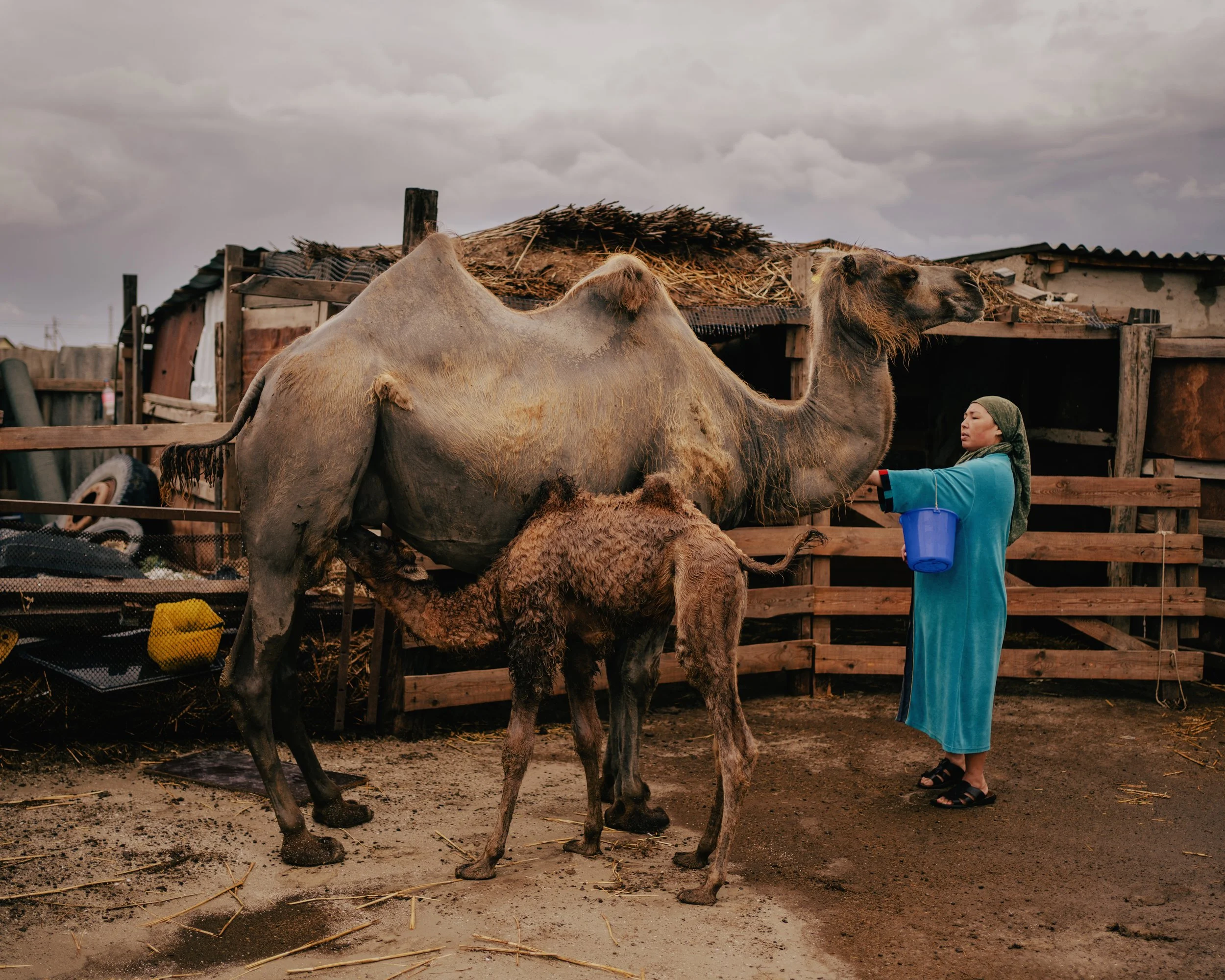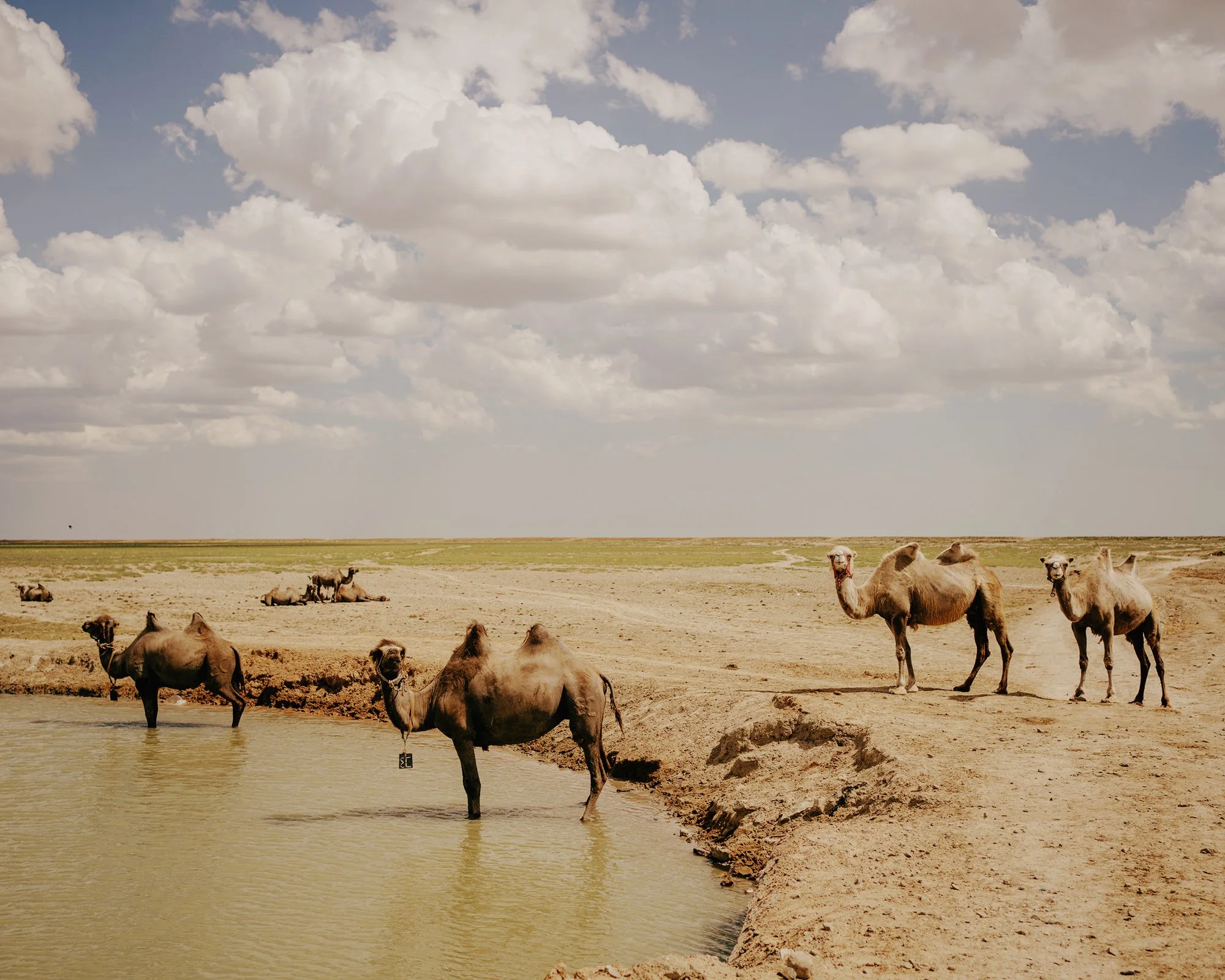Here was a Sea (ongoing project)
With Clément Girardot, journalist
At the mouth of the Ural River in Damba (Kazakhstan), two excavators, like Sisyphus, are permanently digging the bottom of the Caspian Sea. Today, the water level is so low that one can walk in the sea. Boats struggle to access the open sea from the river and often get bogged down, while fish can’t travel up the river to spawn.
Meanwhile, in the suburbs of Atyrau along the road that links Kazakhstan to Russia, the landscape is soaked in water - a flooded desert. Recently, Russia released a significant amount of water into the Ural without concern for the consequences, leading to dramatic flooding in the region. These are two opposite consequences of Russian unilateral water management.
Closer to the coast, in Janbay, the sea is now only a memory. From the embankment where one could admire it only 10 years ago, a desperate landscape now appears. To reach the sea, one must now take a jeep and drive 20 kilometres.
The water level has dropped nearly 2 meters since the mid-1990s, affecting the shallower northern basin and risking near-total drying by the end of the century. Coastlines have shifted up to 50 km, impacting human and economic activities, including the oil industry. The Caspian Sea heavily relies on water inflow from the Volga and Ural rivers, which is hindered by dams and diversions. Climate change exacerbates the issue with increased evaporation, while pollution from industrial activities harms this unique ecosystem.
This story was developed with the support of Journalismfund Europe





















